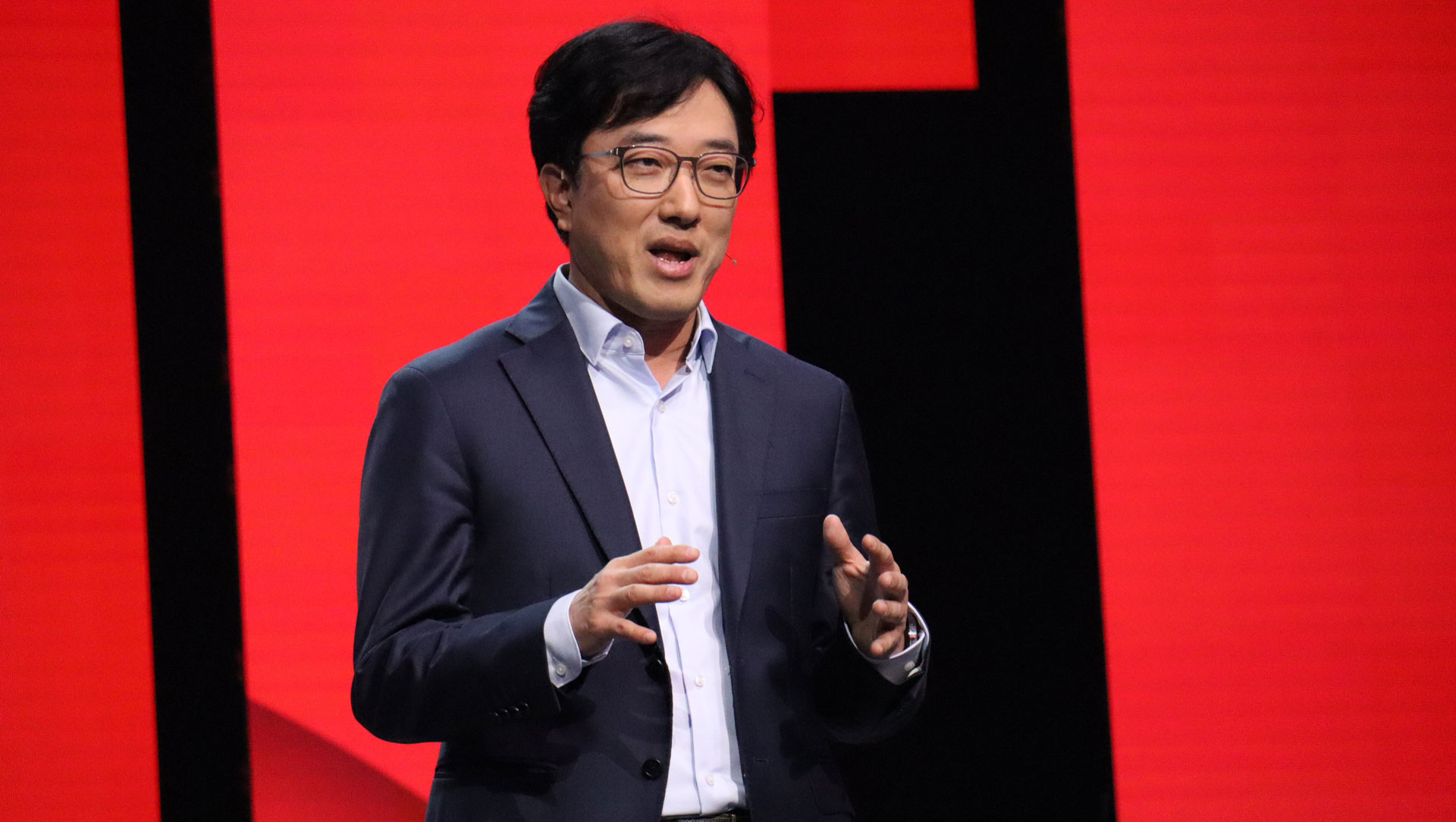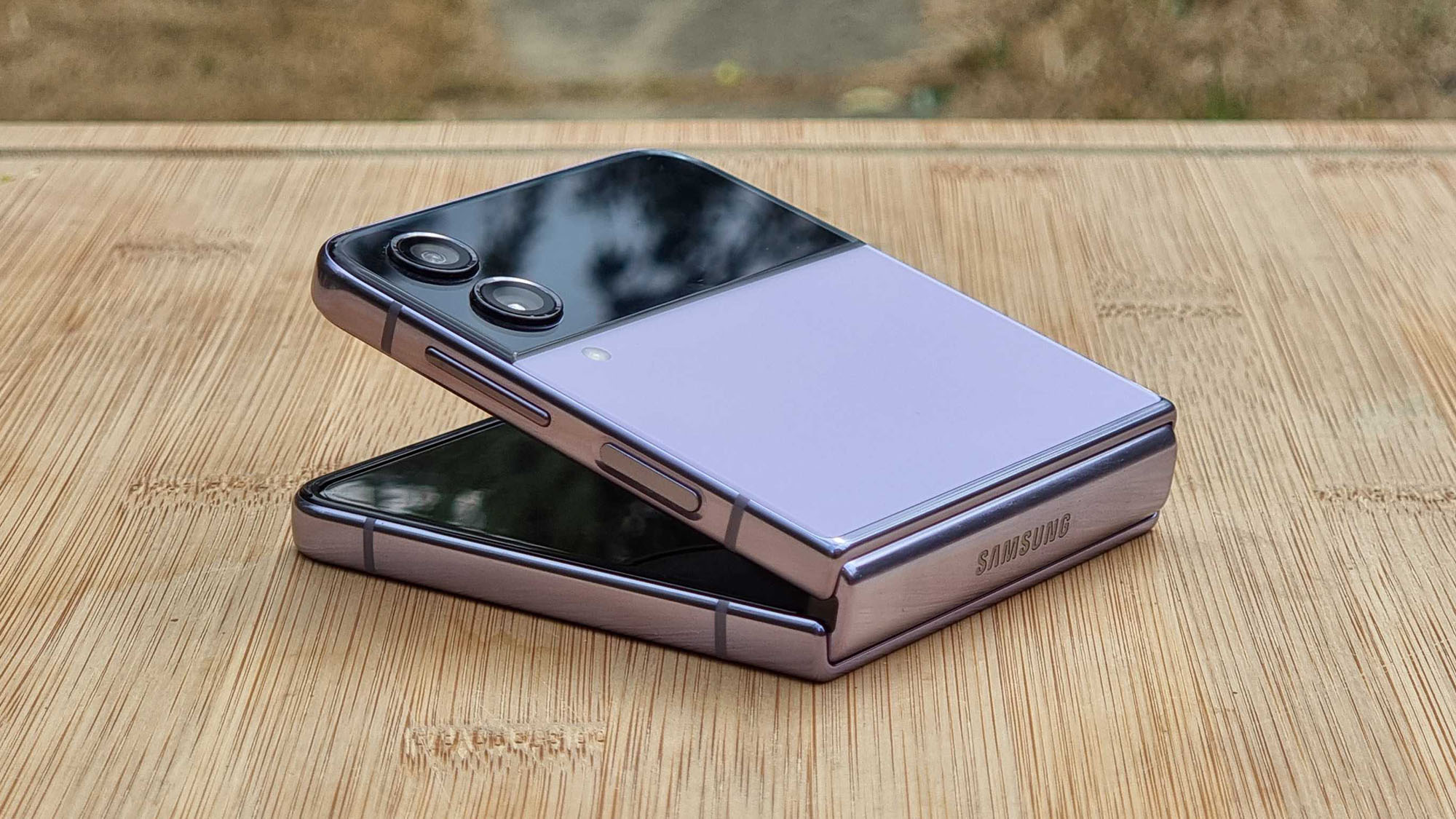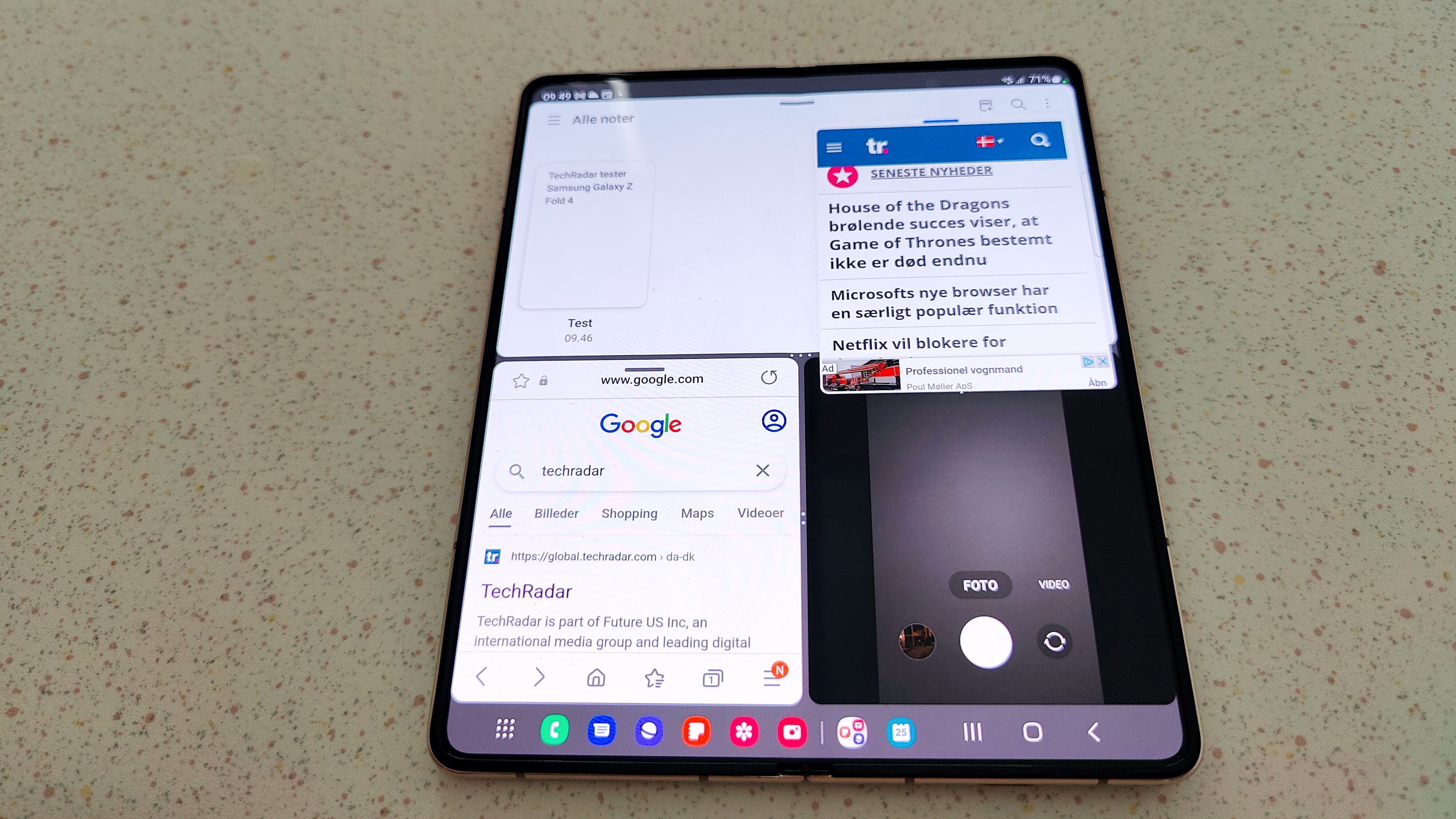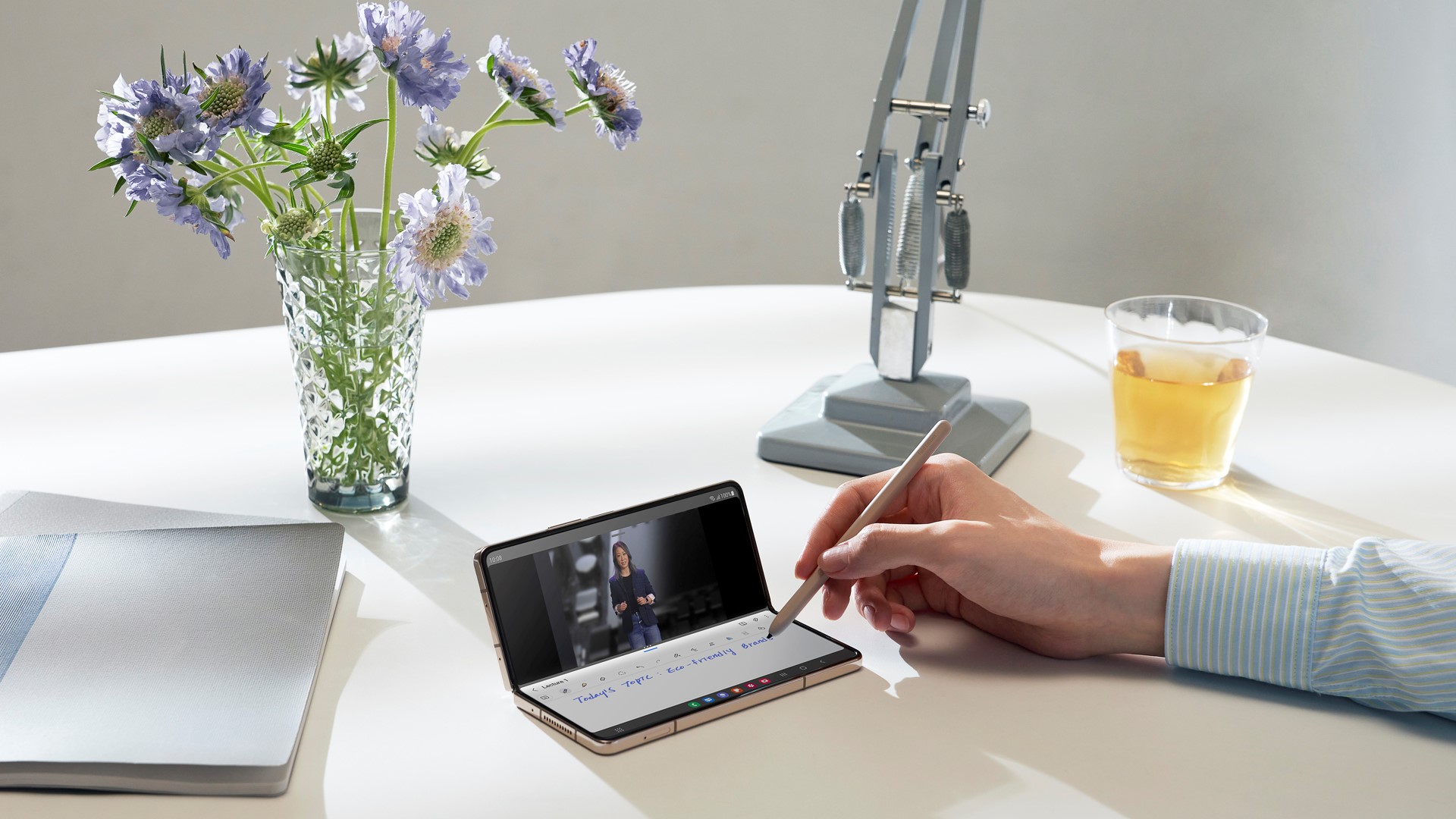These are the secrets of the Samsung Galaxy Fold, and the future of that crease
Samsung's flagship R&D head spills on the challenges of the Folds

Foldable devices, which are now in consumers' hands and even on display here at IFA 2022 in laptops from Lenovo and Asus, might be enjoying their breakout year. If so, we probably have Samsung to thank for it, which has done the lion's share of work to make folding phones and flexible screens mainstream.
How we got this far and how Samsung's estimable foldables, the Samsung Galaxy Z Flip 4 and Samsung Galaxy Z Fold 4, overcame innumerable design challenges is a tale best told by an insider: someone like Dr. Won-Joon Choi, Executive Vice President, Head of Flagship Product R&D Team & Technology Strategy Team at Mobile eXperience Business, Samsung Electronics, who sat down with me at IFA 2022 in Berlin to spill a whole bunch of Fold design and development secrets.
With foldables, Dr. Choi told me, Samsung hopes, as it did with large-screen phones like the Galaxy Note a decade ago, to reshape the industry. It's a line, along with belief that foldables are ready to go mainstream, that Samsung likes to repeat to anyone who will listen – but I sense that, with Choi, the sentiment is based less on marketing-speak than it is on hard-won experience.

Building the Z Fold and Z Flips has been "very challenging... there are lots of constraints and challenges that foldables have from our perspective," said Dr. Choi, who has been with Samsung since 2016 and actually has dual responsibilities of leading flagship R&D and running Samsung's Technology Strategy Team where he builds strategic relationships with startups and global companies. It's something that figures significantly in his work to help bring the now three-year-old Foldable business to fruition.
Dr. Choi gave me a rare peek behind the scenes at the challenges and sometimes surprising solutions his team encountered while developing its folding phones.
The key areas are:
- Durability
- Water resistance
- The hinge
- Screen Size and usability
- S-Pen compatibility
We also, though, talked extensively about the crease. You know that one that's visible on both the Samsung Galaxy Z Fold 4's 7.6-inch foldable display and on the Galaxy Z Flip 4's 6.7-inch flexible display. But I'm getting ahead of myself. We can't talk about the crease without first addressing the remarkable ultra-thin glass-covered displays.
Sign up for breaking news, reviews, opinion, top tech deals, and more.
Samsung's ultra-thing glass or UTG appeared after two generations of Folds, starting with the Samsung Galaxy Z Flip 3 and then quickly moving to the Galaxy Z Fold 3. Various reports claim a third-party company, Schott, is supplying the majority of flexible glass for the phones, with Corning doing the remainder. That may be so, but Dr. Choi stressed that this was a collaborative effort and one driven in large part by Samsung's own R&D efforts.
It took years to develop the roughly 30-micrometer thick bendable glass that sits on top of multiple layers of panel technology. "Whenever you see our innovation showing up in the market, it’s not showing up in one night. Obviously, we start years earlier," said Dr. Choi.

Samsung didn't bring it to early Folds, though, because they weren't sure it would work. When I pressed him on exactly who is making the glass, Dr. Choi told me that, in development, they often have multiple tracks "even for thin glass."
One track is Corning, which already supplies the phones' back panel glass. Another track is done by a display partner (Samsung Display). The rest is "our own activity or research that makes UTG a reality," said Dr. Choi.
I asked again, who among the three makes the glass? Dr. Choi insists that it's "not a single source." There's research collaboration, though "we have a lot of our own IPs [intellectual property] for thin glass," he added.
Dr. Choi did confirm that the flexible glass is not Corning's, nor is the process for making it.
After we went to press, Samsung clarified Dr. Choi's comments and told me: "Raw material glass comes from multi vendors including Corning but the Ultra Thin Glass process involves collaboration among different parties."
Dr. Choi's comments from our interview characterized it this way:
"You start with the very thin glass, make it thin and still robust enough and still bendable, and that’s a lot of process involved and obviously, that process is not done by Corning. So we work with Corning, but the making of this thin glass is not done by Corning, something that we do and some other kind of process by our partners. It’s all a combination."
Over the years, I've interviewed Corning execs and have seen some of its development work for ultra-thin, yet flexible (not bendable) glass. Being able to bend glass in the way Samsung Folds do is a breakthrough. I asked Dr. Choi what that moment was like when Samsung's R&D realized that they had glass that could bend enough to support foldable phones.
He smiled broadly and said, "Of course, we were very, very excited."

Despite that, Samsung is still working on improving thinness and durability, adjusting each display later, and looking at materials, adhesives, and thickness.
I could appreciate the challenge, but I had to ask about the crease since it's what everyone asks me when I show them the Galaxy Z Fold 4.
On the 7.6-inch display, the crease is a uniform divot that runs the length of the screen. You can see it when the screen is off and always feel it when you run your finger across the screen. It's not particularly noticeable when you're using the display.
The crease exists because of the glass material's strength and its need to maintain what I'm guessing is a default bent shape. In other words, when you unfold the glass, you're unbending something that, in its natural state would be like a little like a glass taco shell.
Samsung later told me that the process of putting the UTG in the phones and bending it does not permanently curve it.

Understanding why it's there is one thing, but how do we get rid of it?
"It's a fair question for foldable. We believe [the foldable] has reached a point where it can turn mainstream, but that doesn’t necessarily mean we are done yet," when I Dr. Choi about getting rid of the crease. "Reducing the crease is definitely on the list. It's one of the technical challenges we want to overcome."
How actively is Samsung pursuing the problem? Dr. Choi told me that research is going in two directions. One is looking at the size of the arc (that crease) when you fully fold the Z Fold 4 or Z Flip 4. Somewhat counterintuitively, you do not want a smaller crease. A larger one would put less stress on the display and possibly make for a less noticeable crease because it would spread more smoothly across a wider section of the display.

The other avenue of investigation is in materials. Different materials have different characteristics and might respond differently to folding. Dr. Choi said the display would still be glass, but some material attributes might change to create a different, less noticeable crease shape.
Dr. Choi laughed and told me it's the question everyone is asking and solving it is now "part of his homework."
Waterproofing phones with so many mechanical moving parts also proved challenging. Both Folds have two bodies connected by a hinge. The technology across those two sides is connected by a bit of flexible printed circuit board, which has to feed into each side through holes in the chassis.
The team came up with a number of innovations to protect the delicate parts from the elements. For the holes, the phones use a rubber sealant. For the more exposed hinges, they apply anti-corrosion material. Finally, Samsung developed new, waterproof components.

With the latest Z Fold, Samsung wanted to make the cover screen bigger and I'd already heard stories about how they redesigned the hinge to make it so. However, Dr. Choi added a bit of R&D color, telling me that his team went through "10-20 recipes to reduce size and weight for six-to-nine months. Kept failing and then decided to change the structure completely." It wouldn't be the last time he described the development process as using "recipes".
When it was time to bring S-Pen functionality to the Galaxy Z Fold 3, they had to figure out how to get a rigid, copper-based digitizer under the flexible screen. It was once again a process of trial and error for Dr. Choi's team. This time there were almost 100 recipes.
Finally, "someone came to my office and says, 'Hey, Won-Joon, why don’t we just break it?'" Instead of one stiff copper digitizer, they'd use two: one on each side of the 7.6-inch display.
Naturally, this left a small gap between the two panels. To address that, Samsung developed an AI-based prediction algorithm that can predict where the digitizing S Pen is going on the screen and automatically fill in the tiny gaps.
Unfortunately, the S Pen challenges were far from over.
The thing about the Fold's flexible screen is that its natural screen shape is more of a "U" which means it really wants to pop open along the edges. Samsung counters that with almost a dozen magnets arranged around the edge of the screen that hold it closed when folded. Problem was that those magnets interfered with the electromagnetic energy necessary to make the digitizer work. Initially, "50% of digitizer could not detect S-Pen," Dr. Choi told me.
The solution? Keep the magnetizing force high when closed, but then turn it way down when the Z fold 4 is unfolded,
To listen to Dr. Choi speak is to understand that far from the foldable journey being complete, it's just beginning.
Samsung has ambitions to make its foldable phones thinner and lighter. It will, as it did to fit flagship-level cameras into the devices, optimize every single component. And foldable phones might be just the beginning. Dr. Choi said Samsung is looking at a lot of other device form factors – laptops, larger screens, and more – for its UTG and foldable display. Samsung insists it won't build them, though, unless it knows that such displays bring value to consumers.
Updated 9-5-2022 with clarifications from Samsung.
IFA 2022 is Europe's biggest tech show, and TechRadar is in Berlin to bring you all the breaking news and announcements, plus our hands-on first impressions of the new TVs, wearables, audio devices, and other gadgets on show.

A 38-year industry veteran and award-winning journalist, Lance has covered technology since PCs were the size of suitcases and “on line” meant “waiting.” He’s a former Lifewire Editor-in-Chief, Mashable Editor-in-Chief, and, before that, Editor in Chief of PCMag.com and Senior Vice President of Content for Ziff Davis, Inc. He also wrote a popular, weekly tech column for Medium called The Upgrade.
Lance Ulanoff makes frequent appearances on national, international, and local news programs including Live with Kelly and Mark, the Today Show, Good Morning America, CNBC, CNN, and the BBC.